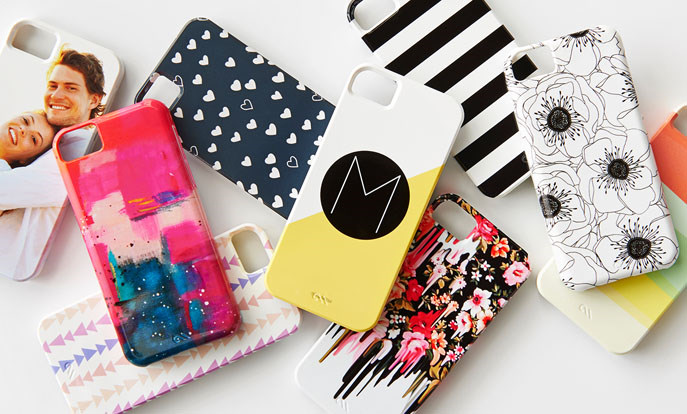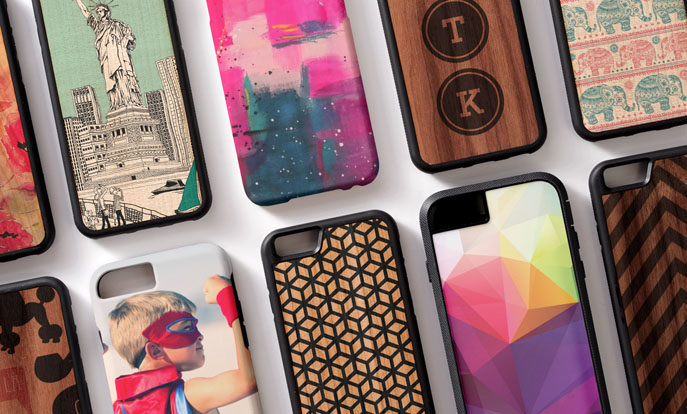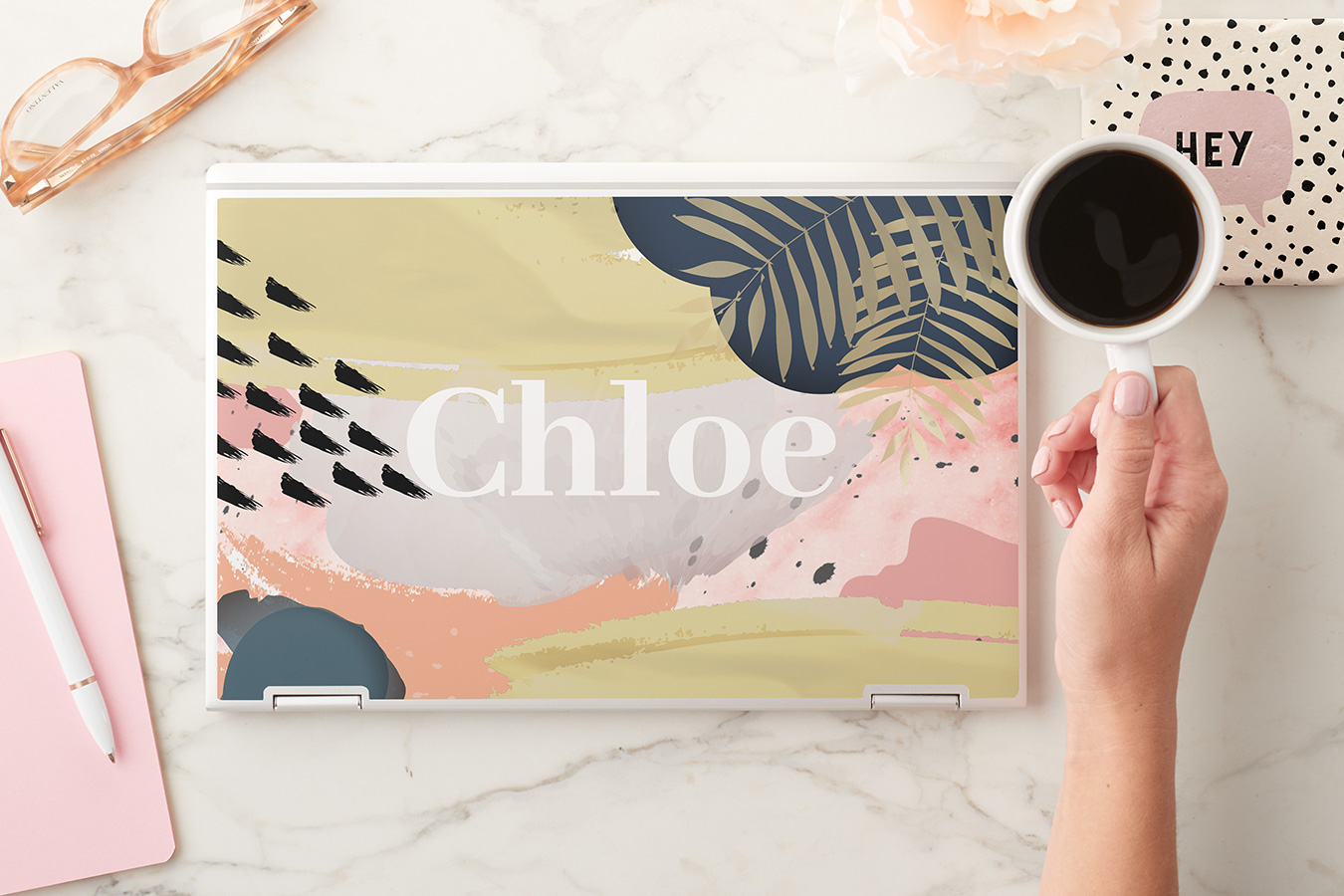You might call it the iPhone, but I call it my right-hand man. I fell in love with my first iPhone in 2010 and have watched it grown into the beautiful device it is today. There have been design changes, software changes, camera improvements, communication improvements, and so much more. I’m shocked at how much this small piece of technology has developed in the past decade, so I decided to take a look at the evolution of Apple’s iPhone.
2007 – The Birth of the First iPhone
Apple welcomed the first generation iPhone into the world on June 29, 2007. Who would have known that this phone would have such a huge impact on the technology industry? Apple is now celebrating the 10th anniversary of iPhones with their biggest release yet, the iPhone X. The first generation iPhone was made out of aluminum and a black plastic wrap. It was being sold for $499 with 4GB of storage. The release of a new iPhone has been continuing annually for the past ten years.
2008 – iPhone 3G
The iPhone 3G was released a year later in 2008, and it was the first cellular phone to introduce 3G data. The popularity of this iPhone was shown in its first weekend selling 1 million units. Steve Jobs of Apple stated, “We’re launching the new iPhone 3G that is twice as fast at half the price.”
I remember asking my parents for an iPhone but instead was gifted with a Motorola Razr. The Razr was a cool phone, but I was a pre-teen diva who wanted a smartphone with a touchscreen.
2009 – iPhone 3GS
When I first heard the “S” for the iPhone 3GS, I thought “oh how cool! The ‘S’ must stand for Steve Jobs!” Then I found out the “S” stood for “Speed.” I still have my doubts, because why wouldn’t the man in charge name a phone after himself! I sure would.
Similarly to iPhone 3G, the iPhone 3GS sold over a million units in its first weekend.
New features in the iPhone 3GS:
- iOS 3.0
- A faster processor = “S” in “Speed”
- Made out of hard plastic material
This iPhone gained the reputation as “the fastest, smartest phone yet.”
2010 – iPhone 4
Apple welcomed the iPhone 4 with a whole new hardware design in June of 2010. I also welcomed the iPhone 4 into my life. Two years too late, but I finally owned an iPhone! This new iPhone included the first front-facing camera with a retina display. The front-facing camera made my selfie game strong and was the perfect mirror to check if I had food in my teeth. Unfortunately, it made lying about where I was much harder every time I’d get a FaceTime video call from my mom.
New features in the iPhone 4:
- iOS 4.0
- Wrapped in a stainless steel frame
- Front and back glass body
2011 – iPhone 4S
A new iPhone with a new “S”! This time I knew it didn’t stand for “Steve.” Obviously, it stood for “Speed”! Wrong again. The iPhone 4S introduced the “S” as “Siri,” every iPhone users personal assistant. This launch resulted in 4 million units sold in the first three days.
New features in the iPhone 4S:
- iOS 5.0 – iCloud, iMessage, Notification Center, etc.
- Updated 8-megapixel camera with 1080p video recording
- Front and back glass design & wrapped in the stainless steel frame.
2012 – iPhone 5
In 2012, Apple came out with the iPhone 5 which was thinner, lighter, and taller compared to the previous iPhones. This new change to the size of iPhone 5 must have been a positive change to many people because two million units sold in the first 24 hours of pre-orders. I was mindblown to read five million units sold in the first three days of its release.
- iOS 6.0
- Bigger, longer screen
- Extra row for applications added to the home screen
- Aluminum body with a front glass screen
2013 – iPhone 5S/5C
The iPhone 5S and iPhone 5C were both released on the same day; however, they differed in price and hardware. Back at it again with those letters! If I were to take my guess, I’d say the “S” stands for “Security” because of the introduction of the new Touch ID passlock system. And since the iPhone 5C has multiple color options for the back of the phone, I’d lock in my answer as “C” for “Color.” The 5C model was a good alternative to attract consumers looking for a cheaper iPhone.
- iPhone 5S – aluminum body with a front glass screen
- iPhone 5C – polycarbonate plastic body

I patiently waited three more years to upgrade to the new iPhone 5S. I loved how thin, light, and taller it was compared to my iPhone 4. What attracted me the most to the iPhone 5S was the Fingerprint Touch ID. I loved the idea of not having to type in my passcode every time I wanted to send a text or check my social media. All I had to do was program my fingerprints into the Touch ID and place a finger on the home button to open! I didn’t have to worry about any of my friends trying to guess my password. If you didn’t have my finger, you could not enter!
2014 – iPhone 6 & iPhone 6 Plus
2014 brought improved design, camera, battery life, and processor to the iPhone 6 & 6 Plus. The year also marked the first time Apple created a “plus” edition for their phone release. Apple kept the glass front and aluminum body but decided to curve the display for a more comfortable grasp.
- iPhone 6 – 5.44 inches tall & weighed in at 4.6 ounces
- iPhone 6 Plus – 6.22 inches tall and weighed in at 6.07 ounces

I was afraid that the idea of a bigger phone would turn off a lot of consumers, but my assumption was wrong because the two devices sold more than 10 million units in the first three days!
2015 – iPhone 6S & iPhone 6S Plus
To go with Apple’s theme of adding an “S” to their new iPhone models, they released the iPhone 6S and iPhone 6S Plus in 2015. This was the year when Apple introduced 3D Touch, which unlocks new shortcuts for opening applications or sending text messages.
- Design identical to iPhone 6 and iPhone 6 Plus
- iOS 9.0 – retina flash in the camera, live photos feature which captures short videos for each picture taken
Spring 2016 – iPhone SE
Breaking the summer/fall tradition for iPhone release dates, the Apple family welcomed the iPhone SE in March of 2016. According to Apple’s Phil Schiller, the “SE” stood for “special edition.” To me, the iPhone SE was special because it went back in time to have the same 4-inch design as the iPhone 5 models. It was the best of both worlds because it still had the updated iOS 10 software features. Apple stated that they sold 30 million 4-inch iPhones in 2015, so introducing the iPhone SE model was a change they were willing to try out.
Fall 2016 – iPhone 7 & iPhone 7 Plus
Following the iPhone SE in Spring of 2016, iPhone 7 and iPhone 7 Plus joined the Apple family in September. The look of the iPhone 7 is very similar to the iPhone 6S; however, Apple added:
- New color options
- Static home button, no clickety-click!
- Removal of the headphone jack
- Water and dust resistant.
As a current owner of the “jet black” iPhone 7, I didn’t know I could love an electronic device as much as I love my iPhone. The “jet black” color option is a glossy, sleek finish which I love to show off and the improved graphics and processor make using this phone every day much more enjoyable. A part of me wishes I invested in the iPhone 7 Plus to get the “Portrait Mode” feature. It’s the new camera feature that is capable of taking professional-looking pictures at your fingertips. Going from iPhone 4 to iPhone 5S to now having an iPhone 7, I have become more excited for new iPhone releases but also very concerned for the health of my bank account.
September 2017 – iPhone 8 & iPhone 8 Plus
With the release of the iPhone 8 and iPhone 8 Plus approaching, I am excited and eager to learn more about what Apple has up their sleeve. The iPhone 8 and iPhone 8 Plus have the same design as the iPhone 7 and iPhone 7 Plus, but the new models will have an all glass, sleek look. To learn more about this design, I found Apple Event Live Roundup where Superphen’s Tech Blog mentions the iPhone 8’s new “glass-on-glass design with Aerospace-grade aluminum frame.” A mixture of glass and aerospace-grade aluminum material doesn’t quite convince me enough to go case-less. It’s important to wrap up your device in a customizable case for a long-lasting, beautiful life! Some new features on the iPhone 8 and 8 Plus are wireless charging, new storage options: 64GB and 256GB, and a more advanced camera.
November 2017 – iPhone X
In celebration of Apple’s 10th iPhone Anniversary, we welcome the new and incredible iPhone X, pronounced iPhone 10. This is the biggest design change since the iPhone 6 in 2014. Digital Trends states in their iPhone X Review that the phone “feels great in the hand; it’s slim, efficiently designed, beautiful to look at and hold.” They mention Apple’s smart decision to get rid of the slippery aluminum back; however, they go on to say it has been replaced with “an all-glass back…now you can drop your phone and shatter it on both sides.” Prepare your new baby for any drop by putting it in a Zazzle iPhone case.
The inside of your new iPhone should look as sleek as the outside! An addition to the outside is a super retina display giving the iPhone X the highest amount of pixels in a smartphone thus far. iDownload Blog came out with a breathtaking iPhone X Wallpaper Pack that will “take full advantage of the wide color spectrum and intense black contrast capabilities” on your new iPhone 10.
Once I find $999 laying around, I’ll get my hands on an iPhone X for these three new features:
- No more home button! Edge to edge display! More screen to watch my Netflix shows!
- Face ID, a facial recognition software to unlock my phone with my beautiful face
- “Animojis” – uses face-scanning software to animate emojis with my own facial expressions
I look forward to the day when I will have meaningful and profound iMessage conversations as a panda bear or a piece of poop emoji.
Nicole is our Content Strategist. She enjoys long walks to Taco Bell, rollerblading into the sunset, and eating Reese’s Cups for breakfast, lunch, and dinner. Find her writing about iPhone cases, holiday card messaging and even music festival tips!




